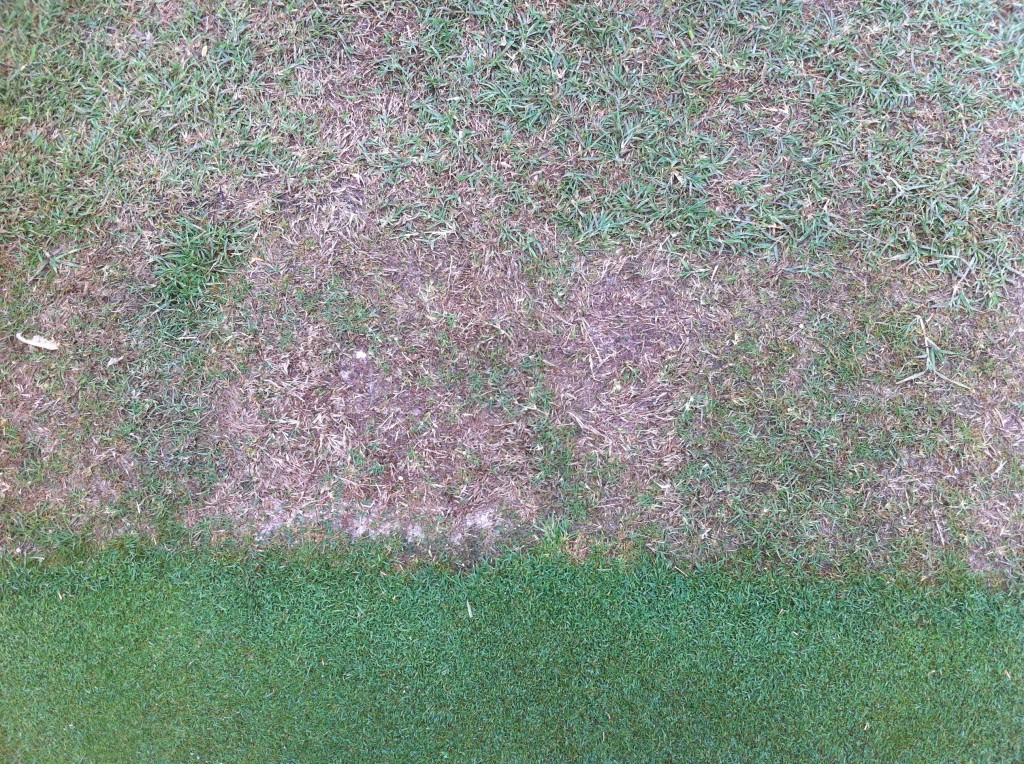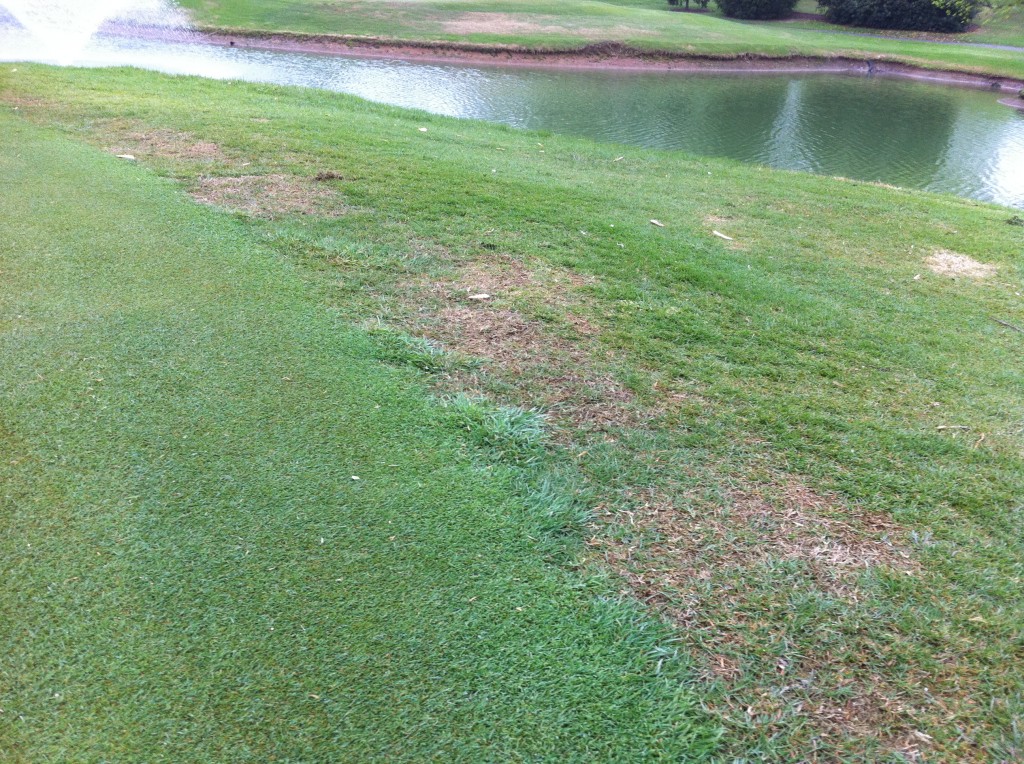As the course begins to wake up from the long, cold, snowy winter this year, we are having our first chance to really see the difference varieties of bermuda grasses on the course. As they green up we see exactly how each cultivar reacts to warm weather. The Vamont Bermuda (the main variety on the course) has broken dormancy and is off to the races. Vamont is a more cold tolerant bermuda able to withstand cold temperatures longer than others, an enable it to green up faster. 419 Bermudagrass, on the other hand, does not tolerate cold temperatures as well causing it to enter dormancy at the first sign of winter and will not resume growing until temperatures in the night are constantly in the 60 degrees.
So, as you watch and wonder what the 419 collars are doing, don’t jump to any conclusions yet. It is still too early to decide if the collars are going to be successful or not. When temperatures at night reach 60 degrees or above consistently, we will then be able to draw a conclusion and implement cultural practices that will encourage growth.
Once in the active growing season for 419 we will begin to topdress and strip some areas of the collars to level out with the playing surface of the green. After completed, it should not take more than a week to two weeks for everything to grow back together.


